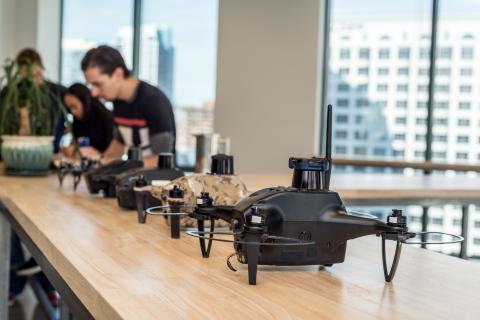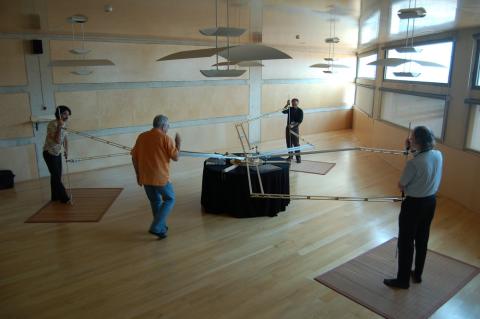[September 6, 2018]
How to Design a Product the Right Way

There are a lot of products in the world and many of them fail to delight in ways that I imagine their talented design teams originally intended. As an engineer at Shield AI, I spend a lot of time thinking about what makes some designs successful and some a failure. No team of talented people enters a room and sets out to design a product that fails to delight. So how does this happen? And how can it be avoided? As an engineer I take full responsibility for this. While we may not deserve all of the blame, I believe that we are in a unique position to ensure success and avoid mediocrity.
As engineers, we’ve been trained to believe that creative product design is the domain of marketing and industrial design. I’ve been lucky to work with some great marketers and industrial designers throughout my career and if there’s one thing that I’ve learned from them, it’s that not only are engineers able to engage in creative design, we’re quite good at it, when we do it right.
Too often in engineering, when presented a project, we first ask for detailed product requirements and then ideate design solutions that fit strictly within them. While this approach may yield quick results, it also leads to product design that doesn’t set out, first and foremost, to delight the customer.
The approach presents a number of challenges:
We develop cognitive bias against any solutions that were not originally considered.
-
We strictly follow product requirements which may be arbitrary.
-
We are encouraged to design to minimum viable specifications, even when the only cost to a more perfect design is more effort.
-
The design selection is narrowed at a time when we have the least amount of information.
This doesn’t happen because we, as engineers, set out to design unsatisfying products, but because it’s in our DNA to favor efficiency in the design and development process. Organizational pressures also often discourage engineers from questioning the norms of that process.
So… no product requirements? What then? This is where it gets a little uncomfortable for many of us engineers: let’s go talk with the customer! Who better to learn from than the users themselves? It’s hard enough to design a good product, but if you can’t put yourself in the user’s shoes, it’s near impossible.
At Shield AI, we collaborate with active and former service members for whom we have created our products. I can think of numerous examples of ideas that were only possible as a result of these engagements.

After developing a deep understanding of the user, it’s our job to think of the most enjoyable experience for accomplishing the desired task. We must think holistically, rather than optimize for one scenario. Think of this envisioned experience as perfection that may never be reached, but always sought.
Knowing the user and equipped with this vision of the perfect experience, we’re ready to start designing. As design concepts are generated, each is measured against the others to explore how close they are to reaching perfection and at what cost. Unlike product requirements, which reward engineers who seek the minimum viable option, this approach allows us to continuously seek that perfect experience while being mindful of the cost.
Take, for example, a scenario where two teams are tasked with designing a new bluetooth speaker. Team One is focused on meeting product requirements, while Team Two is focused on getting as close to perfection as possible within the cost constraints of the product. In this scenario, late in the development process, a new bluetooth protocol is released that doubles the range of connection.
The engineers for Team One look at the technology and determine that it’s not worth the extra effort to implement the enhancements given that the product requirements are already met. Team Two, on the other hand, has a vision for perfection to which this new technology brings them significantly closer. After weighing the cost and risk of late implementation, they determine that it’s worth the effort.
Engineers who are delegated the authority to creatively seek perfection rather than strictly follow product requirements will more often than not come out on top.
At Shield AI, we strive for perfection in an environment where people are empowered in all positions to go beyond the required. Our team realizes that the extent to which an organization leverages and accesses all its creative capacity will help determine that organization’s ultimate success. Since joining Shield AI, I’ve contributed to a creative process that includes the entire team with our customers at the heart of all we do.









